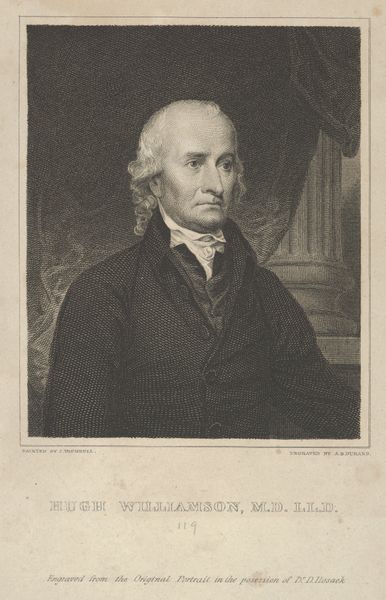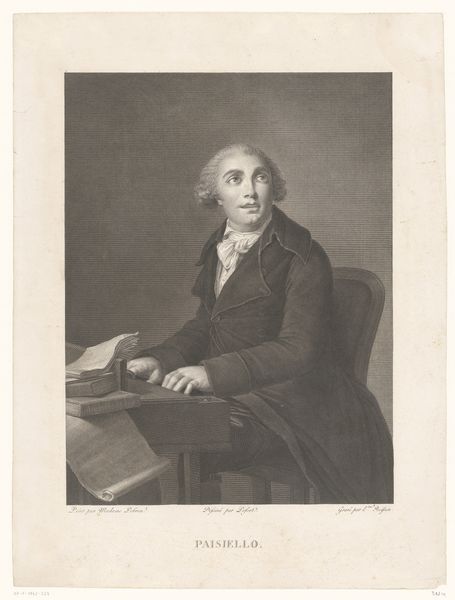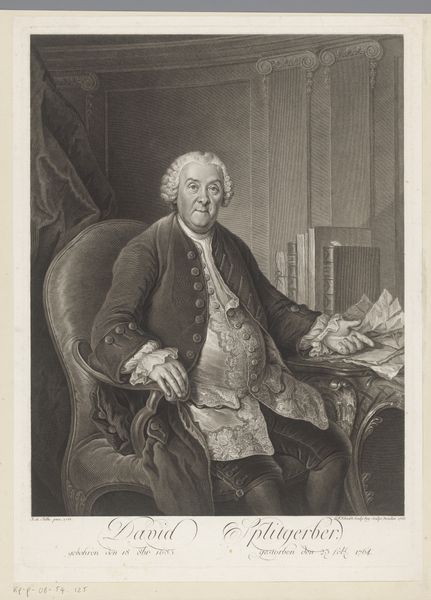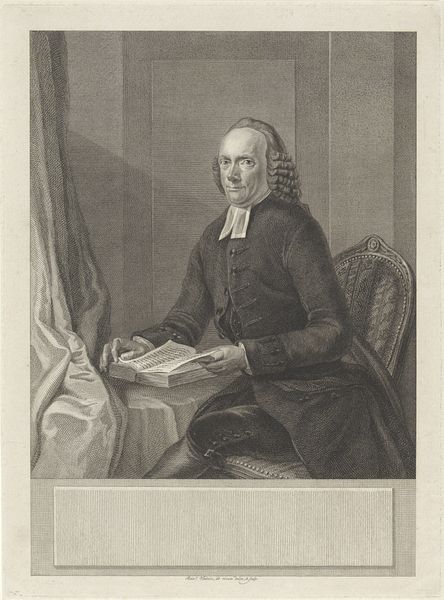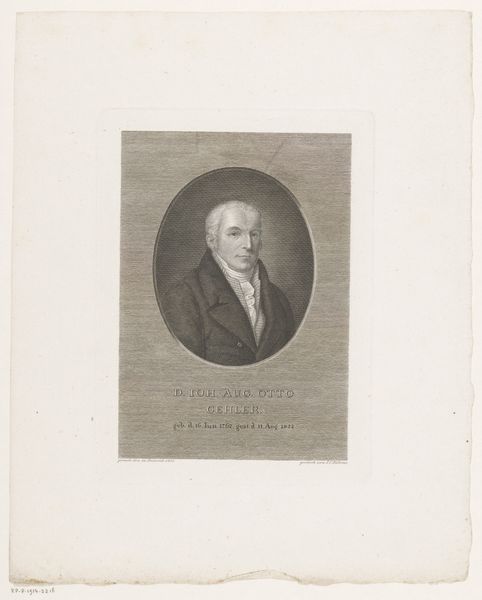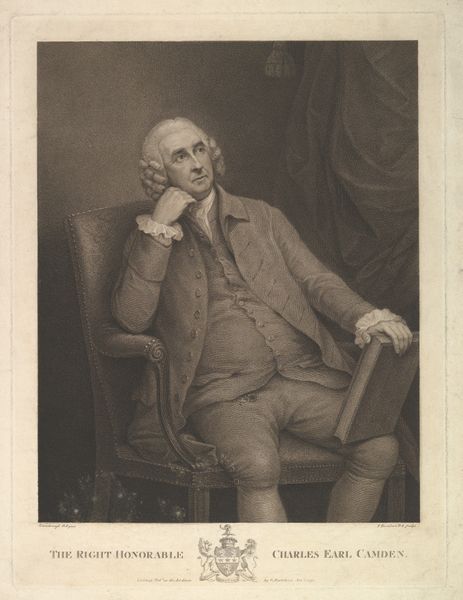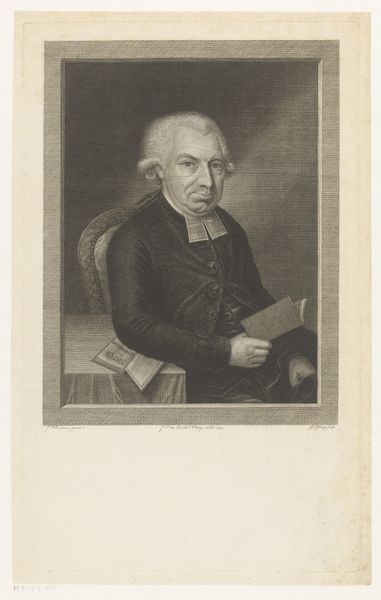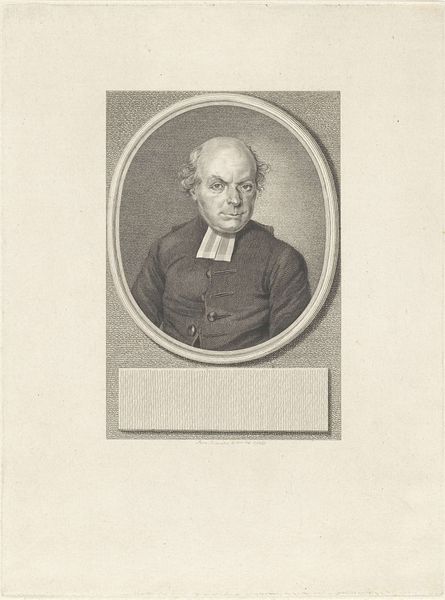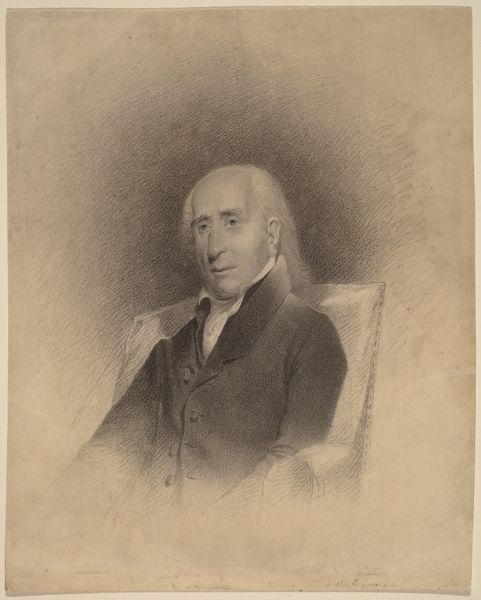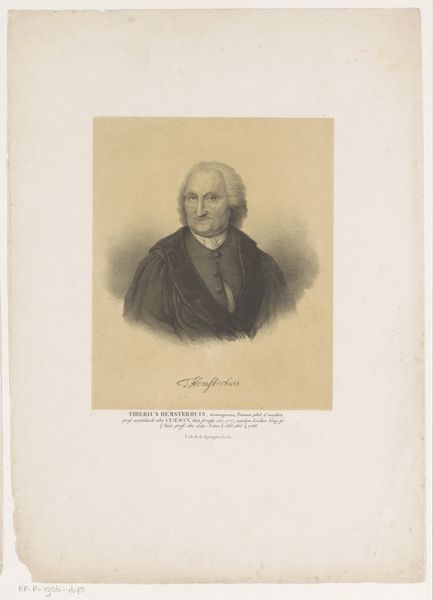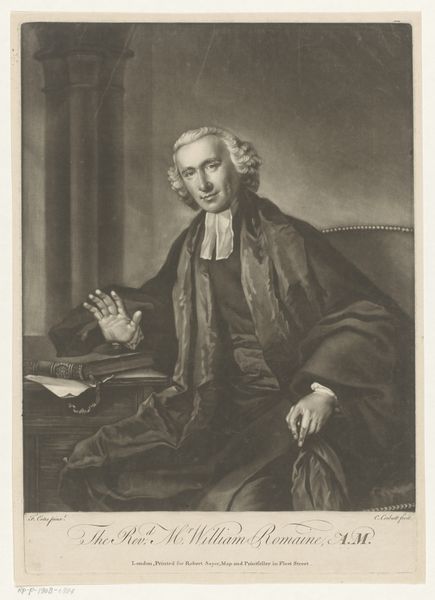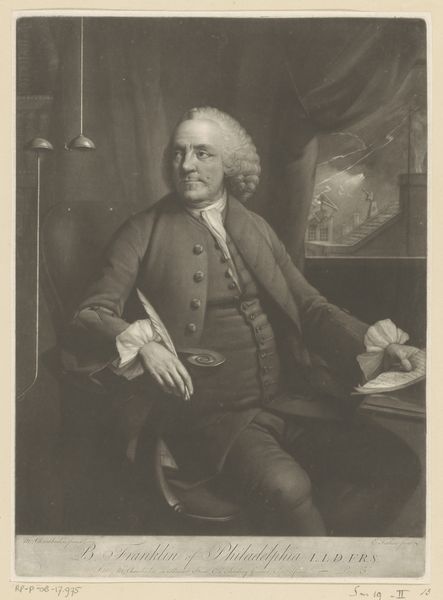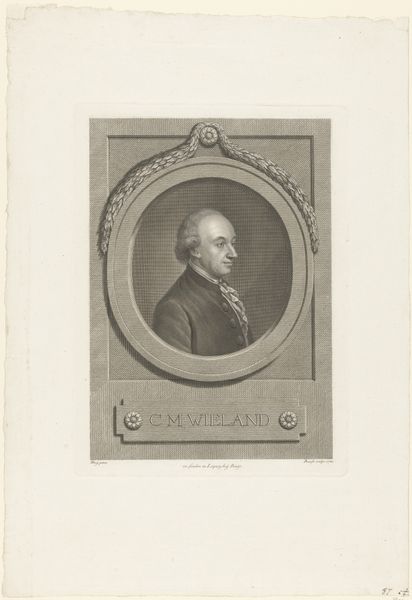
Portret van Adolph Werner van Pallandt tot Zuthem, drost van IJsselmuiden 1790 - 1810
0:00
0:00
luigischiavonetti
Rijksmuseum
print, etching, engraving
#
portrait
#
neoclacissism
# print
#
etching
#
genre-painting
#
academic-art
#
engraving
Dimensions: height 525 mm, width 414 mm
Copyright: Rijks Museum: Open Domain
Editor: This is a print of "Portret van Adolph Werner van Pallandt tot Zuthem, drost van IJsselmuiden" dating from 1790 to 1810, housed at the Rijksmuseum. It was etched and engraved by Luigi Schiavonetti. It feels very formal to me. How do you interpret this work, particularly considering the historical context of portraiture? Curator: It's indeed formal, but also meticulously constructed. Consider the backdrop: not a natural landscape, but a bookshelf and a draped curtain. This isn't simply about recording the likeness of Adolph Werner; it’s about constructing and reinforcing his identity within the social and political power structures of his time. Think about who typically commissioned and had access to portraits like these. What message was the sitter trying to send? Editor: I see what you mean. The books and the coat of arms below signal status, but it also feels… curated. What’s the role of class in portraying identity? Curator: Precisely. Class dictates so much about how we perform identity. Werner’s pose, the expensive-looking chair, and even his relaxed hand gesturing towards the document– all contribute to a performance of learned leisure, signifying his position. Think of the visual language and symbols of power deployed across different periods. How might they reinforce existing hierarchies? Editor: That makes me wonder about access, though. As a print, how might that change its socio-political implications compared to a painted portrait? Curator: Excellent question! While a painted portrait might remain in the family, a print allows for wider circulation. It subtly shifts the dynamic, potentially broadcasting the subject’s status more broadly. Were these prints intended for the rising middle class, offering a glimpse into the elite? Editor: It's fascinating to consider the work as a piece of visual propaganda, maybe even creating desire for social mobility! It’s really about constructed identities. Curator: Exactly. It is important to analyze those nuances as active meaning-making through art. By understanding its intent, we are prompted to critically examine our modern representations. Editor: I never considered the broader implications of prints like this. I’m beginning to look at art with different eyes!
Comments
No comments
Be the first to comment and join the conversation on the ultimate creative platform.
